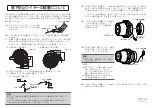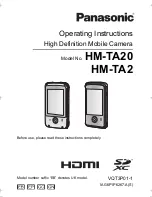
P
age
12
AGM and Gel batteries have a much longer shelf life than wet, lead-acid batteries.
With a self-discharge of only 1-3% per month, AGM and Gel batteries can be stored
for a year or longer without needing to be charged.
5.1 - BATTERY STORAGE PROCEDURE
1.
Charge batteries before they are placed in storage.
2.
Disconnect batteries from the equipment and charger to eliminate any
parasitic loads.
3.
Check the batteries based on conditions and schedule in
TABLE 9
below.
4. Check the open circuit voltage (OCV) of each battery in the set. If any battery
within the set is less than the values in
TABLE 10
below, recharge the battery
set.
5.
If the charger has a maintenance mode, select that mode to boost charge
batteries. Otherwise, run the normal charge cycle.
6.
If the batteries are stored shorter than the time periods in
TABLE 9
, they do
not need to be recharged prior to being put back into service.
AGM and Gel batteries do not have a memory effect; so there is no need
to fully discharge batteries prior to charging.
Storage
9 months
6 months
3 months
Time
Below 68°F (20°C)
68°F to 86°F (20°C to 30°C)
Above 86°F (30°C)
Temperature
TABLE 9
< 2.0 Volts
< 6.2 Volts
< 8.3 Volts
< 12.5 Volts
< 16.7 Volts
Open Circuit Voltage (O.C.V.)
2 Volt
6 Volt
8 Volt
12 Volt
16 Volt
Battery Nominal Voltage
TABLE 10
Summary of Contents for DC Series
Page 1: ...INSTALLATION AND OPERATION MANUAL ...
Page 4: ...Page d Notes ...
Page 5: ...Page 1 INSTALLATION AND OPERATION MANUAL ...
Page 24: ......









































